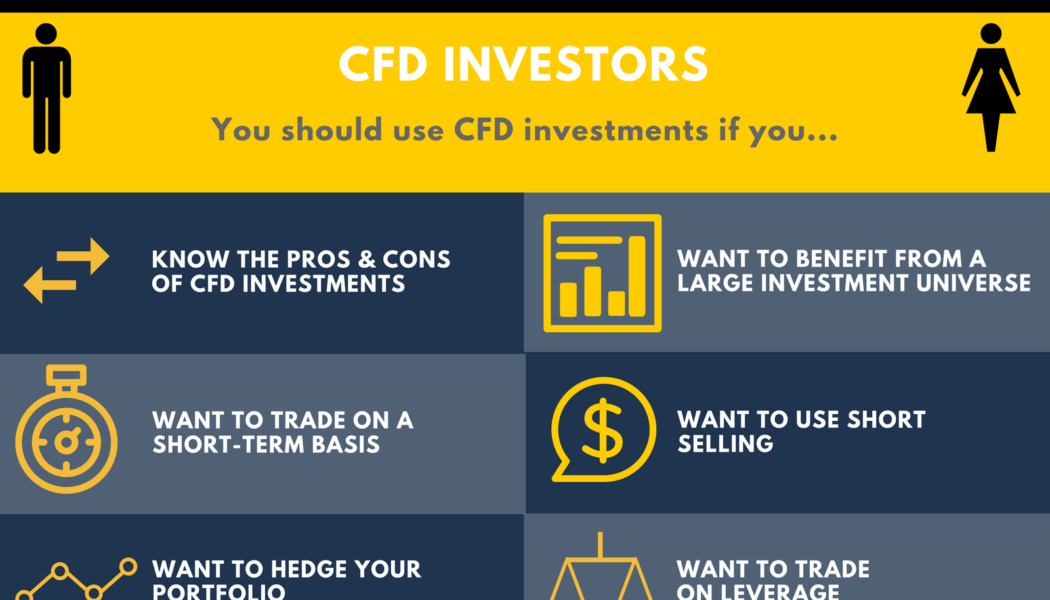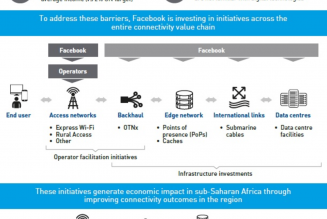/* custom css */
.tdi_4_61e.td-a-rec-img{ text-align: left; }.tdi_4_61e.td-a-rec-img img{ margin: 0 auto 0 0; }
The use of Contracts for Differences (CFDs) continues to trend among retail traders, given these financial derivatives are ideal when market volatility is elevated and valuations have a directional bias. Understanding what are CFDs and some of the main threads linked to them is not difficult, even when it comes to people that are just getting started in the industry.
The Basics of CFDs
People will very often hear about the stock markets, FOREX, or commodities in the media. These are financial assets with a floating value, creating incentives for speculation. Retail traders and institutions all around the world are getting involved in these markets daily, based on changing economic conditions, political events, monetary policy announcements, and other variables that have the potential to impact valuations.
/* custom css */
.tdi_3_e80.td-a-rec-img{ text-align: left; }.tdi_3_e80.td-a-rec-img img{ margin: 0 auto 0 0; }
Contracts for Differences (CFDs) are derivatives tracking the exact price of underlying assets (currency pairs, stocks, indices, commodities, bonds, ETFs, etc.), allowing users to take advantage of price movements, without any ownership.
Margin Trading
An important quality of CFD trading is the use of leverage (margin trading), which enables traders to effectively borrow funds from their brokerage to place larger orders on the open market. As it is highlighted in many educational resources available on the web, leverage is a double-edged sword, since it can increase both profits and losses.
Each trader needs to be aware of the risks involved and learn one of the most important skills professional traders master – risk management.
Risk Management
Risk management represents a series of tasks that help traders manage their market exposure. Some of the most popular tools used are stop loss and take profit. Any trader wanting to approach markets professionally should place at least a stop loss on every trade since only by doing that, the downside will be always under control.
For those that are not yet accustomed to placing orders and risk management, an MT4 demo account can help them learn, without having to put real funds in the process. This is one of the most ignored steps, yet it makes a big difference between traders that constantly outperform and those that are unable to get out of losses.
Starting to trade online using CFDs is now available for the wider public, yet few people understand that getting involved in the financial markets is like any other profession, requiring a lot of studies, learning from mistakes, and developing a flexible trading strategy, that can adapt to different circumstances.
Short-term trading – the right approach?
When trading with CFDs, traders can take advantage of short-term price movements, due to the lower costs (spreads and swaps). This is a suitable approach, considering financial markets had been very uncertain during the past year, mainly because of the COVID-19 pandemic and its effects.
Since nobody knows where markets are headed in the longer run, a step-by-step approach is necessary. With an abundance of CFDs based on the most popular asset classes, financial events leading to price swings can be taken advantage of, even from the comfort of one’s place, using a basic PC or laptop.
By Staff Writer.
/* custom css */
.tdi_5_cd0.td-a-rec-img{ text-align: left; }.tdi_5_cd0.td-a-rec-img img{ margin: 0 auto 0 0; }









